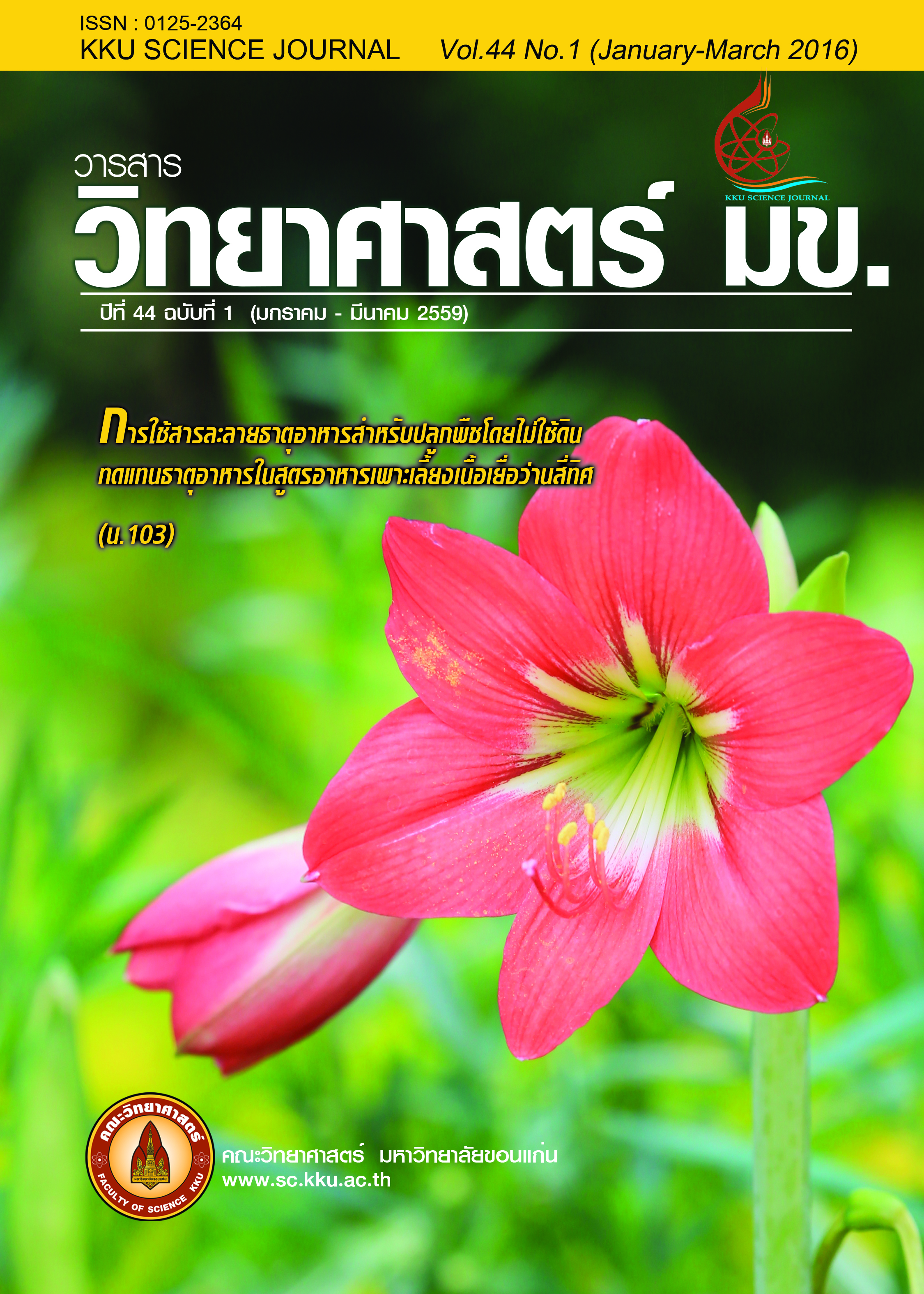Fungal contamination in peanuts and control by spice essential oils
Main Article Content
Abstract
In this study, peanut and peanut products (10 samples each) were analysed for fungal contamination. Percentage of fungal contamination in raw whole peanut and fried peanut samples was analysed by direct plating method, while total yeast and mold counts in ground roasted peanut and sweet peanut samples were analysed by dilution plating method. Raw whole peanut samples (86.2%) were highly contaminated with mold, but fried peanut samples (76.2%) had lower proportion of mold contamination. However, ground roasted and sweet peanut samples had low number of total yeast and mold counts (less than 10 – 7.0 x103 CFU/g).
The minimum inhibitory concentrations (MICs) of clove, dill and cardamom oils against Aspergillus flavus TISTR 3041, A. ochraceus TISTR 3557, A. parasiticus TISTR 3276, A. terreus TISTR 3109, A. versicolor TISTR 3460, Alternaria alternata TISTR 3282, Penicillium citrinum TISTR 3437 and A. flavus PN-09 isolated from a raw whole peanut sample were determined. Most fungal species were sensitive to clove oil with the MIC of 1 mg/ml, except for A. versicolor. Dill oil, a less effective oil inhibited growth of most mold strains tested (4 mg/ml MIC), except for A. ochraceus and A. versicolor, more resistant strains. Cardamom oil was found to be a less effective oil for inhibition of all mold strains tested (16 mg/ml MIC). Therefore, clove and dill oils were selected for use in peanut packaging. Clove and dill oils (4 mg/ml) were applied by coating the inner surface lids of the petridishes containing peanut seeds. The peanut seeds (100%) were contaminated with A. flavus TISTR 3041 and A. flavus PN-09 spores. After 7-day storage at 30ºC, 75% relative humidity, the amount of fungal growth and aflatoxin content in the peanut seeds were determined. Clove and dill oils (4 mg/ml) caused decreasing of fungal growth and amount of aflatoxin produced by both strains of A. flavus in the peanut seeds.
Article Details

This work is licensed under a Creative Commons Attribution-NonCommercial-NoDerivatives 4.0 International License.


